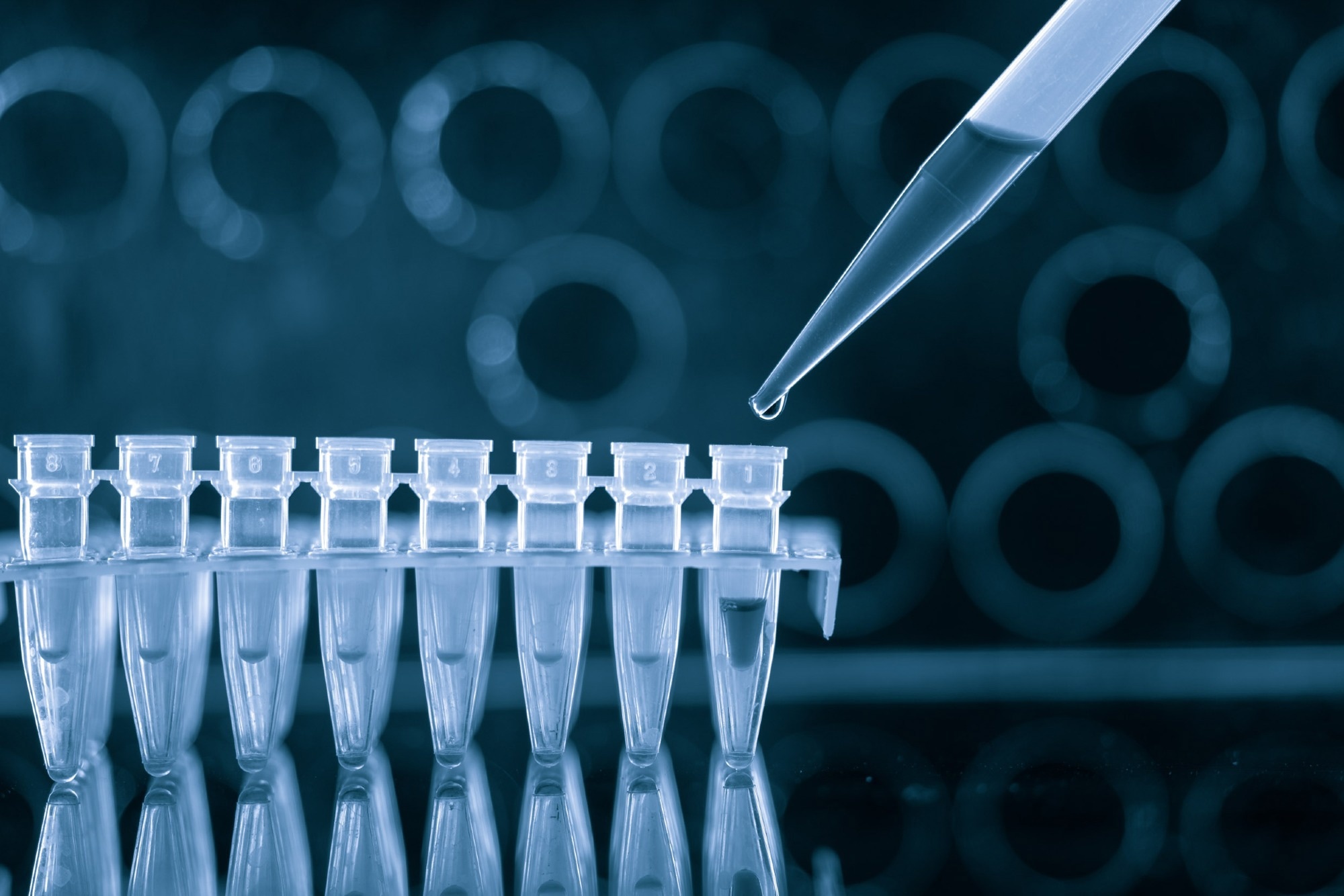What are clinical diagnostic tests?
Rapid diagnostic tests for infectious diseases
Current diagnostic methods for detecting coronavirus disease 2019 (COVID-19)
Clinical diagnostic tests for malignancies
Artificial Intelligence in clinical diagnostics
References
Further reading
Clinical diagnostics detects, identifies, and monitors human diseases or health disorders.
Accurate and sensitive diagnostic procedures are crucial for precisely identifying a patient’s health conditions, which is decisive for therapeutic decision-making.
 Image Credit: SaiArLawKa2/Shutterstock.com
Image Credit: SaiArLawKa2/Shutterstock.com
What are clinical diagnostic tests?
Clinical diagnostic tests include various invasive and non-invasive procedures that physicians select to detect and monitor human diseases accurately. An accurate disease diagnosis is vital for avoiding incorrect or delayed treatment and poor prognosis.
Some common examples of clinical diagnostic tests include total blood count, comprehensive metabolic panel, X-ray, ultrasonography, magnetic resonance imaging (MRI), computer tomography (CT) scan, and polymerase chain reaction (PCR).
For better screening and management of patient’s conditions, the World Health Organization (WHO) has prepared a list of necessary diagnostic tests, which includes 58 tests for the diagnosis of various common health conditions and 55 tests for the diagnosis and monitoring of “priority” diseases, including human immunodeficiency virus (HIV) infection, tuberculosis, malaria, hepatitis B and C, human papillomavirus, and syphilis.
All these tests are performed in vitro using human biofluids, such as blood and urine. Some tests, such as those for detecting acute malaria and diabetes, are designed for poorly-resourced primary healthcare facilities. These tests can be performed without electrically-operated instruments or trained personnel.
Rapid diagnostic tests for infectious diseases
The development of various nucleic acid analyzing methods, including hybridization protection assay and PCR, has reformed the field of molecular diagnostics since the 1990s. The introduction of real-time PCR has made it possible to rapidly identify and quantify microbial infections in patient-derived samples. Compared to pathogen culture-based methods, these new methods have enabled accurate and rapid detection of pathogen-specific nucleotide sequences in clinical samples.
Timely detection of viral, bacterial, or any microbial infection is vital for preventing disease spread and developing more severe and fatal conditions. Rapid diagnostic tests with a turnaround time of less than 2 hours have shown promising outcomes in microbial management.
Various molecular multiplex syndromic panels are currently available to detect microbial infections in the blood, respiratory tract, gastrointestinal tract, and brain/spinal cord (meningitis/encephalitis). These panels utilize a real-time PCR approach to simultaneously amplify and detect nucleic acids of multiple pathogens and drug resistance mechanisms using clinical samples.
Some examples include the BD Max system (BD Diagnostics), ePlex, ePlex NP, and XT-8 systems (GenMark Diagnostics), FilmArray system (BioFire Diagnostics), and VERIGENE system (Luminex Corporation).
Another recent advancement in infectious disease diagnosis is the laboratory-quality, point-of-care molecular testing platforms that utilize real-time PCR-based amplification and detection of viral nucleic acid.
Several Clinical Laboratory Improvement Amendments (CLIA)-approved point-of-care testing platforms are available to detect infectious diseases in ambulatory setups and poorly-resourced setups rapidly. Some examples include Alere i (Alere Scarborough, Inc.), cobas Liat System (Roche Diagnostics), and Solana System (Quidel Corporation).
The significant advantage of these diagnostic tests is the rapid, accurate, and timely detection of microbial infections, which is vital for faster administration of treatment, protection of patients from long-term exposure to pathogens, and prevention of the development of antimicrobial resistance.
 Image Credit: luchschenF/Shutterstock.com
Image Credit: luchschenF/Shutterstock.com
Current diagnostic methods for detecting coronavirus disease 2019 (COVID-19)
Real-time reverse transcription PCR (RT-PCR) is considered the gold standard for detecting COVID-19, a novel disease caused by severe acute respiratory syndrome coronavirus 2 (SARS-CoV-2). This method has shown almost 100% sensitivity and accuracy in detecting viral RNA in respiratory samples.
However, the method is time-consuming, expensive, and requires trained personnel and sophisticated instruments. The development of reverse transcription has subsided these shortcomings of RT-PCR loop-mediated isothermal amplification (RT-LAMP) assays, which amplify viral nucleic acid at a constant temperature.
CRISPR/Cas-based assays have been developed to rapidly identify and cut SARS-CoV-2 sequences and generate a detectable signal for diagnosis. In addition, serology-based immunoassays and antigen-based assays have been designed. Serology-based immunoassays detect SARS-CoV-2 specific antibodies in the blood, whereas antigen-based assays are used to qualitatively detect viral proteins in respiratory samples during an acute infection phase.
Clinical diagnostic tests for malignancies
The introduction of theranostics, a novel platform for simultaneously detecting and treating a disease, has significantly improved the management of malignancies. Mainly, using theranostic nanoparticles has made it possible to target several cancer biomarkers and destroy cancer cells synergistically.
Theranostic nanoparticles are used in various platforms for cancer diagnosis, including photoluminescence, ultrasonography, MRI, and CT scan, to precisely and ultra-sensitively image multiple cancer-specific markers.
Another advancement in cancer diagnostics is using microfluidic platforms, including liquid biopsy microdevices, microfluidic immunohistochemistry, and paper microfluidic devices. Using these platforms, it is possible to quantify/analyze various cancer biomarkers in liquid biopsies, such as whole blood, serum, and plasma.
The cancer biomarkers primarily measured include circulating cancer cells, cancer cell-secreted proteins and exosomes, and apoptotic/necrotic cancer cell-secreted DNA, RNA, and proteins. The main advantage of this method is no need for invasive tissue biopsies. Further improvement in this field has been made by integrating microfluidic techniques with biosensors.
Artificial Intelligence in clinical diagnostics
The application of artificial Intelligence in clinical diagnostics has significantly improved diagnostic accuracy and efficacy. The main aim is to support the cognitive ability of diagnosticians and reduce human errors.
Several advancements have been made in this particular field. Pattern recognition software and deep learning algorithms have been developed for digital image analysis and automated disease classification.
In hematology, clinical diagnostic methods are primarily associated with microscope-based cell morphology analysis and flow cytometry-based cell population analysis. In this field, artificial Intelligence has significantly impacted microscopic image processing/analysis and identifying subtle but significant details that human eyes cannot detect.
References
Further Reading